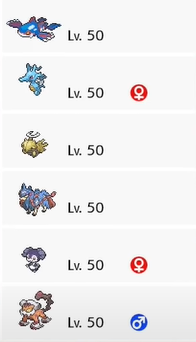
Analyzing your opponent’s teams
8min 40sec read
Breaking down your opponent’s team quickly & understanding their general strategy will help you make better choices
Written by Aaron Zheng
Battling / Before The Battle
One powerful skill in VGC is the ability to analyze your opponents’ teams and break it down into different components. You’ll generally want to think about a team’s key strengths and draw from your experience & knowledge of the format/metagame. This is something that comes with practice - knowing how the most common Pokemon are generally used will help you a lot here.
This article will focus on some of the key things you’ll want to think about as you look at opposing teams. Keep in mind that these areas are relevant to any VGC format, not just the current one, but some areas will be more crucial to the current format (e.g. in Series 12 VGC, each player is allowed two “Restricted” Pokemon, so teams will generally center very heavily around those two Pokemon).
Strong Pokemon: What Pokemon on my opponent’s team are the primary offensive options? How can my opponent get these Pokemon to move before mine?
These are typically Pokemon that get access to very powerful attacks & have good base Attack/Special Attack
Also pay attention to Pokemon that can boost their stats (e.g. Swords Dance Landorus-T, Iron Defense Ferrothorn)
In Sword/Shield specifically, think about which Pokemon are likely to Dynamax
Speed Control: Does my opponent have any way to control the speed?
Common methods include Trick Room, Tailwind, Electroweb, Icy Wind, Thunder Wave, Scary Face, and Max Moves
Think particularly about how your opponent can use these attacks to immediately give their partners an advantage -- e.g. Whimsicott + Kyogre (Tailwind allows Kyogre to immediately outspeed everything and use Water Spout)
Pace and playstyle of their team: What is the pace at which the opponent will play the game? See here for more tips for defining and identifying this.
General speed of my opponent’s team: What are the base speeds of all of my opponent’s Pokemon? Do my key Pokemon outspeed theirs without any speed control?
Typing: Are there any types that can hit the majority of my opponent’s team for neutral or super-effective damage? Are they very weak to any specific type?
Pairs of Pokemon: Are there any duos that specifically synergize well with each other while on the field together? Which work particularly well as leads?
Support vs Offense: How many of my opponent’s Pokemon are supportive vs. offensive? If they have too many of one or the other, can I take advantage of that?
Note: Support Pokemon are those that typically don’t focus on dealing damage (e.g. Whimsicott, Incineroar, Grimmsnarl, Dusclops)
Item Choice: What items are my opponent likely to be running on each Pokemon? Are there any multiple Pokemon that normally like to run the same item, and if so, which one do I think is actually carrying said item?
Now, let’s take some of the concepts we’ve described & take a look at some examples.
EXAMPLE 1
In this example, the opposing team is a fast-paced team centering around multiple offensive options in Kyogre, Kingdra, Zacian, and Landorus-T. The general goal of the team is to overwhelm you with offense before you can attack. My main observations, as I look at the team, are as follows:
Strong Pokemon: The team has four powerful attackers in Kyogre, Kingdra, Zacian, and Landorus-T. Kingdra/Landorus-T are significantly stronger when Dynamaxed, so I expect one of those two to Max most of the time. I also have to make sure I have answers to Shedinja, both in the early and late game.
Speed Control: The team can increase Kingdra’s speed via the Rain. Kingdra and Landorus-T both can use Max Airstream to boost their partner’s speeds. Choice Scarf Kyogre is also a likely item to consider here.
Pace & Playstyle: This team generally feels like a hyper offense team. I wouldn’t expect too much bulk on any Pokemon other than Indeedee, and I would expect an early (turn 1 or 2) Dynamax.
Pairs: There are some clear duos here: Kingdra + Kyogre allows Kingdra to be fast via Swift Swim immediately, and Indeedee + Landorus-T allows Landorus to potentially set up a Swords Dance early on.
Support vs Offense: The team indexes heavily on offense. Indeedee is one of the few support options, while Shedinja serves as a potential switch-in thanks to Wonder Guard.
Here are some of my general thoughts when I see this team:
- This team is super fast faced and centers really heavily around KOing your opponent before they can move. However, as a result, the Pokemon are generally more frail.
- Shedinja can be a nightmare to deal with and can be a strong late game win-condition for my opponent. I want to make sure that I have multiple ways to deal with it in the endgame.
- Kingdra and Landorus-T are both super strong Dynamax options for my opponent. They’re also a lot weaker if NOT Dynamaxed, so I expect one of the two to Max in the majority of games.
EXAMPLE 2
In this example, the opposing team centers around Palkia and Calyrex-I as the primary attackers. It’s a slower paced team that can utilize Trick Room effectively. My main observations, as I look at the team, are as follows:
Strong Pokemon: The team will generally rely on Palkia and Calyrex-I for damage output. I expect one of those two to Dynamax in the majority of games.
Speed Control: The team has three potential Trick Room users in Palkia, Porygon 2, and Calyrex-I. I don’t think it’s likely that all 3 will run it, but that’s going to be their main means of speed control. Regieleki can also Electroweb, allowing my opponent to play with a faster mode of their team (e.g. Regieleki + Palkia lead)
Pace & Playstyle: Palkia and Calyrex-I generally feel like a bulky offense core. I generally expect my opponent to play a bit slower, but I also want to be wary of a turn 1 Dynamax from Palkia in particular.
General Speed of their Team: Calyrex-I and Palkia are likely to be slower given the Trick Room component of the team. Max Speed Palkia, however, is still a possibility.
Pairs: If my opponent wants to set up Trick Room, I really have to look out for Incineroar + a Trick Room user or Amoonguss + a Trick Room user as their lead.
Support vs Offense: Palkia and Calyrex will deal the majority of damage generally. Porygon 2 also can be annoying to deal with - it’s incredibly bulky & can heal itself with Recover but also gets access to solid attacking moves like Foul Play and Tri-Attack.
Here are some of my general thoughts when I see this team:
- The team, generally, is on the slower end with Porygon 2/Calyrex-I/Amoonguss/Incineroar. I think they’ll generally look to set up Trick Room, but they don’t need to 100% depend on it as Regieleki and Palkia can be fast.
- It’s difficult to outright deny my opponent Trick Room in the early game since 1) they have both Incineroar + Amoonguss to support the Trick Room users 2) they have three potential Trick Room options. I should expect it to go up - can I look towards either reversing it or stalling it out?
- The Palkia + Calyrex-I core is scary as both are great Dynamax options. If I can get one to Dynamax early, it means the other cannot Dynamax, limiting its options.
EXAMPLE
In this example, the opposing team is a fast paced team generally centered around Yveltal and Zacian as the primary attackers. My main observations, as I look at the team, are as follows:
Strong Pokemon: The team will generally rely on Yveltal, Zacian, and Regieleki for damage output. I expect Yveltal or Regieleki to Dynamax the majority of the time in this composition, but there’s a chance Incineroar is also trained offensively.
Speed Control: The team has a Whimsicott, so I have to watch out for Tailwind. Regieleki also potentially has Electroweb and Yveltal can Max Airstream while Dynamaxed.
Pace & Playstyle: The team is generally very offensive, but I do have to watch out for more passive combos with Amoonguss, especially early on (e.g. Incineroar + Amoonguss lead)
General Speed of their Team: Regieleki & Zacian are incredibly fast, while Yveltal is also decently speedy. They may not even need to use any speed control to outspeed many teams.
Pairs: Any combination of Yveltal, Zacian, and Regieleki as a lead can be incredibly potent, with lots of damage potential early on. Whimsicott + any of the three and Incineroar + any of the three are all also viable leads.
Support vs Offense: The majority of the offense on this team comes from Yveltal/Zacian/Regieleki, while Whimsicott and Amoonguss really lack damage output here.
Here are some of my general thoughts when I see this team:
- The team has some of the fastest Pokemon in the format in Zacian and Regieleki and has Whimsicott as well. It may be difficult to outspeed my opponent consistently here.
- I think it’s likely they’ll want to Dynamax early on in the game since their team has so much damage. Since they’re fast as well, can I look to stall out my opponent’s Dynamax, then retaliate with a late game Dynamax of my own?
- Yveltal sticks out as the clear Dynamax option, with Regieleki as another likely option. Incineroar CAN be an option, but I think it’s far less likely than Yveltal/Regieleki.
- None of their main offensive trio (Yveltal/Regieleki/Zacian) resist Fire/Water-type attacks - do I have any of those that I can utilize effectively?
Closing Words
At the end of the day, you can only analyze your teams to the best of your ability, and you’re not always going to get everything right -- your opponents may be running an unexpected strategy, Pokemon, move, or even item. In fact, that first example is a popular team in Series 12 VGC that actually features physical Kingdra, which few players generally expect.
The most important thing is to start training yourself to recognize key patterns. Ideally, you’ll be able to look at a team of six Pokemon and understand the overall goal of the team. As you further build up your ability to analyze your opponent’s team, you’ll be able to make better decisions both in team preview & during the battling process!




